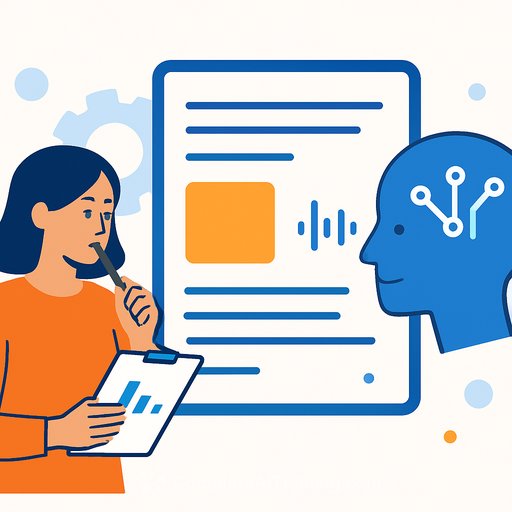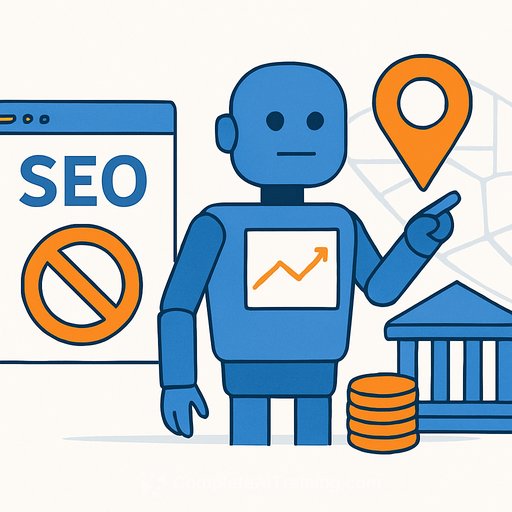Why agentic AI is the next big shift in CX strategy
Agentic AI lets brands anticipate needs, reduce effort and move faster by blending automated actions with human judgment. The result: fewer escalations, clearer choices and quicker resolutions across the customer lifecycle.
The market signals are clear. The autonomous agents category is valued at $4.35 billion in 2025 and is projected to exceed $100 billion by 2034 - a CAGR above 42%. Earlier estimates put returns for generative AI at roughly $3.50 for every $1 invested, suggesting even stronger upside as agentic systems take on more of the work.
Personalized, proactive and predictive
Personalization works when it's simple, timely and actionable. Agentic AI should know the customer, anticipate needs based on live signals and present one or two clear next steps - all within policy.
The payoff is higher satisfaction, fewer repeat contacts and less need for escalations.
What this looks like for customers
- Wireless plan usage: Mid-month, a family trends over data. They get a message with two choices: a temporary boost or a plan change, including price, start date and an automatic reversion. No call required.
- Retail delivery slip: A shipment misses the window. The customer gets a heads-up with an alternative item or pickup option plus a small credit where appropriate - confirm in a tap with a new delivery date.
- B2B onboarding stall: A new account isn't using key features by week two. The admin gets a short nudge, a 10-minute guided setup and a scheduled check-in with the CSM only if usage doesn't recover.
What marketing leaders can do
- Set clear customer promises: Publish simple rules your teams can uphold (e.g., "We'll alert you before you exceed your plan," "We'll offer alternatives if delivery is late"). Use these to guide AI behavior.
- Prioritize moments that matter: Pick three to five high-impact points (usage spikes, shipping delays, early adoption) and track First-Contact Resolution, time-to-resolution and complaint rate for those points only.
- Keep offers simple and bounded: Present a small set of approved options that fit on one screen and can be explained in a single sentence (limited credits, reschedule windows, reversible plan changes).
What to avoid
- "Personalization" that adds steps: If customers must re-enter details or compare complex choices, it's not helping.
- Proactive alerts with no action: Every message should lead to one or two decisions, not a "learn more" loop.
- Chasing deflection as the goal: Optimize for faster resolution, fewer repeats and higher CSAT/NPS. Let deflection follow.
Orchestrating complex customer paths
Customers switch devices and channels mid-task and still expect speed, clarity and consistency. Agentic AI adds the most value in multi-step flows that span systems and teams - moves, returns, renewals and plan changes.
Your job: reduce effort in the messy middle, keep promises consistent everywhere and move customers forward without handoffs.
What this means for customers
- Telecom move: A customer changes address and sees service availability, appointment options and billing adjustments in a single flow. No repeats, no callbacks - just clear confirmation and next steps.
- Retail return (mixed items): The assistant explains where each item goes, refund timing and any value-added services at the start. Labels are generated, pickups offered and status updates sent automatically.
- B2B access issue: A user loses feature access after an org change. The assistant confirms role, checks plan entitlements and either resolves access or routes to the right owner with a succinct summary.
What marketing leaders can do
- Prioritize end-to-end experiences, not channels: Own the top three multi-step flows (onboarding, returns/exchanges, plan changes/renewals). Define explicit service promises and apply them everywhere.
- Set simple rules of engagement: Agree on outcome metrics (time-to-resolution, first-contact resolution, complaint rate) and plain-language guardrails (offers allowed, human step-in triggers, required explanations).
- Make progress visible: Review a short weekly dashboard: where customers get stuck, completion without handoffs and impact on satisfaction and revenue. Reward changes that remove steps or clarify policies.
What to avoid
- Channel-by-channel fixes: Upgrading chat or email alone won't help if the core flow is broken.
- Over-personalization without clarity: A friendly tone cannot mask unclear policies or next steps.
- Measuring deflection instead of outcomes: Focus on resolution speed and repeat contact reduction. Treat deflection as a byproduct.
Combining human and agentic
The best experiences pair AI speed with human judgment. A simple rule works: automation handles routine; people handle exceptions, money and emotion.
What this means for customers
- B2B renewal change: The assistant flags under-use and suggests a smaller package. If contract questions arise, a manager joins with a prepared summary. Paperwork and confirmations complete automatically.
- Airline disruption: The assistant rebooks and presents seat choices. If special-needs signals appear, it queues a human agent to finalize seating and arrangements while the system sends confirmations and receipts.
- Healthcare plan questions: The assistant narrows options by doctors and medications. If cost concerns surface, a licensed rep joins with a clear script; the assistant finishes enrollment and documentation.
What marketing leaders can do
- Set handoff rules: Define simple triggers for human step-in (high financial impact, repeated friction, sensitive topics). Let customers request a person at any time.
- Make handoffs seamless: Require a one-screen summary after every transfer: customer goal, steps completed, current options and next steps.
- Measure the blended experience: Track outcomes by path (AI-only, human-only, blended). Favor paths that cut effort and accelerate resolution, not just those that reduce handle time.
What to avoid
- Forced containment: Blocking human access erodes trust and drives complaints elsewhere.
- Context resets: If customers repeat themselves after a transfer, the system - not the customer - is at fault.
- Scripted empathy: Use people when stakes or emotions are high. Use AI to support the conversation, not to fake it.
Success requires mindset shifts
- From campaigns to continual service: Treat CX as always-on. Let teams define event triggers, consent rules and action limits, then iterate weekly based on FCR, time-to-resolution and complaint rate.
- From content-first to policy-and-data-first: Secure consented identity, entitlements and current policies before creative. Confirm eligibility, cite authoritative sources and operate within guardrails (e.g., credits up to $25, 7-day reschedule windows).
- From automation for deflection to automation for outcomes: Compare AI-only, human and hybrid paths. Assist agents to move faster, escalate when risk/ambiguity crosses thresholds and feed corrections back into prompts, policies and tools on a set cadence.
Making agentic AI work
Keep it simple: define clear promises, orchestrate the complex middle, and blend automation with human judgment when dollars, risk or emotion are high. Focus senior attention on these levers and customers will feel the improvement first - the metrics will follow.
Marketing and CX leaders own the rules of engagement, not the plumbing. Set guardrails for what the assistant can offer and when a human steps in. Align on a few high-value flows, review outcomes weekly and scale only what measurably improves resolution speed, reduces effort and lifts satisfaction.
Level up your team
If you're building practical skills for agentic CX, explore focused programs for marketers here: AI Certification for Marketing Specialists and AI courses by job role.
Your membership also unlocks:






